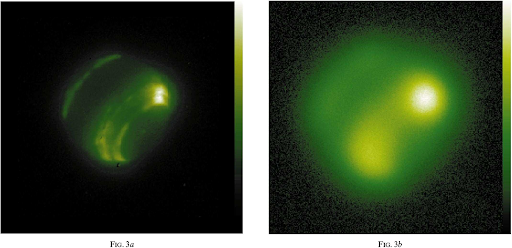Difference between revisions of "Adaptive Optics"
| Line 15: | Line 15: | ||
[[Category:Lasers]] | [[Category:Lasers]][[Category:Astronomy & Cosmology]] | ||
Latest revision as of 12:06, 26 August 2022
The air is never still. Turbulence in the air makes bubbles of changing density. And different densities of air let light go through them at slightly different speeds. When light goes from a medium where it travels at one speed to one where it travels at a different speed, the light will bend (this phenomenon is called refraction, and it should not be confused with diffraction which, although also causing light to bend, is a completely different phenomenon). Essentially, these turbulence bubbles act like a whole bunch of really weak lenses. So these random and unpredictable turbulence bubbles slightly bend the light in random and unpredictable directions. This is why stars twinkle at night. Your laser beam twinkling will make it hard to aim and keep on tight focus. Fortunately, there is a technological solution. See, those twinkling stars were a nuisance for astronomers. So they invented a way to measure the twinkle and and then bounce the incoming light off a mirror that is controllably warped in just the right way to refocus all the twinkly light into a nice tight spot on the detector.[1] This is called adaptive optics. For lasers, we do this in reverse. The beam is bounced off the same deformable mirror, which de-focuses (or perhaps pre-focuses) the light in such a way that the turbulent air re-focuses it to the tight spot you want.
| The improvement of resolution (corresponding to spot size of a laser when operating in reverse) for imaging astronomical objects with (left) and without (right) adaptive optics.[2] |
Credit
Author: Luke Campbell
References
- ↑ https://www2.keck.hawaii.edu/optics/aodocs/KAON489.pdf Performance on Keck II, June 2007 M. van Dam et al., KAON 489
- ↑ https://iopscience.iop.org/article/10.1086/316543 P. Wizinowich, D. S. Acton, C. Shelton, P. Stomski, J. Gathright, K. Ho, W. Lupton, K. Tsubota, O. Lai, C. Max, J. Brase, J. An, K. Avicola, S. Olivier, D. Gavel, B. Macintosh, A. Ghez, and J. Larkin, “First Light Adaptive Optics Images from the Keck II Telescope: A New Era of High Angular Resolution Imagery”, Publications of the Astronomical Society of the Pacific, Volume 112, Number 769, pp. 315-319 (2000)

